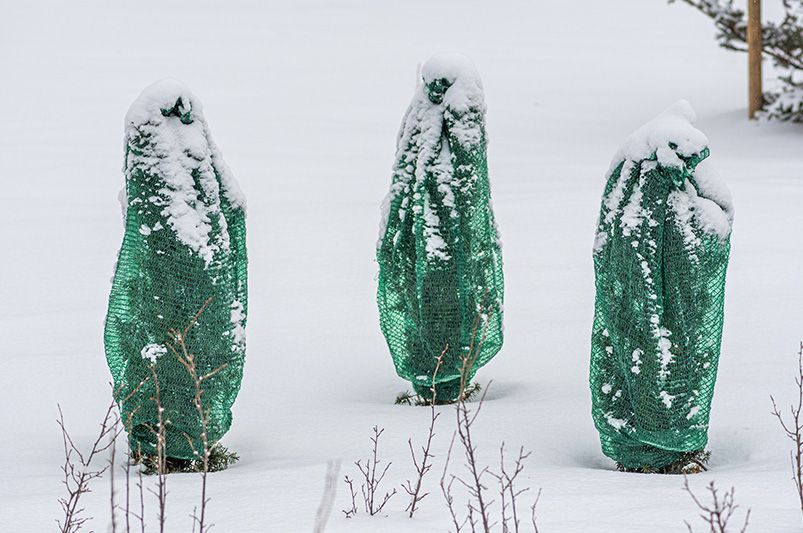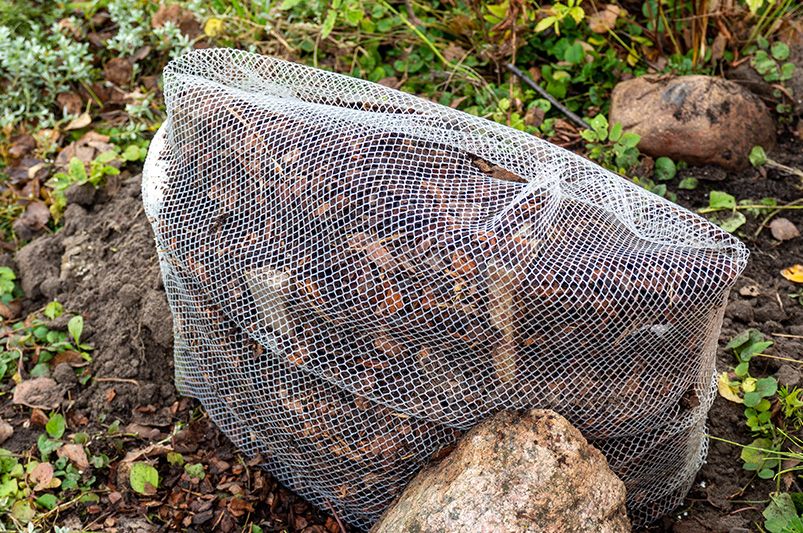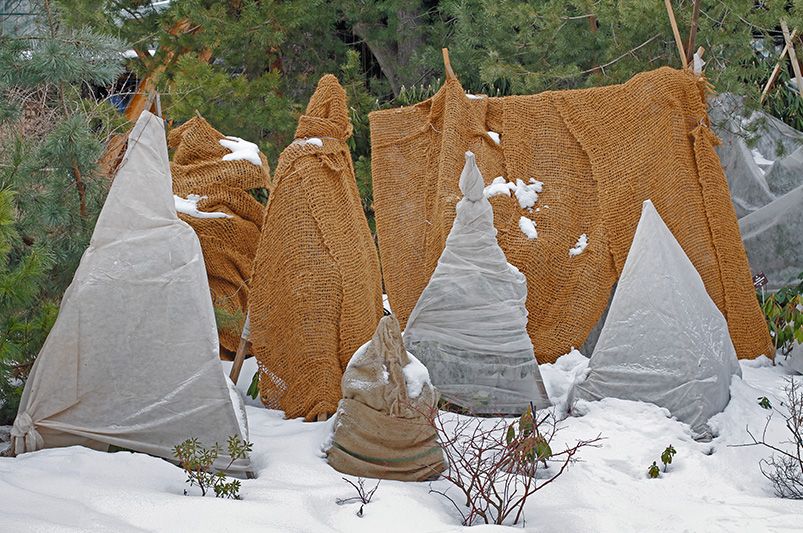
Essential Guide to Protecting Shrubs for Winter
Published: 07/11/2024 | Updated: 07/11/2024
Key Highlights
- Winter's chill can damage vulnerable plants like shrubs, so understanding winter protection is crucial.
- Identifying signs of cold stress, like discoloration or dieback, helps address issues early.
- Pre-winter preparation involves mulching, wrapping, and shielding against harsh elements.
- Selecting appropriate materials, like burlap or evergreen boughs, is key for effective protection.
- Properly timed removal of winter protection in early spring is essential to avoid harming new growth.
Introduction
Some plants can handle winter well, but many, like different shrubs, need a bit of extra care. Giving them winter protection is important. This helps keep these sensitive species safe from tough weather and makes sure they stay healthy in spring. Knowing when the first frost arrives in your area will help you act on time.


Understanding Winter Threats to Shrubs
Winter can be a tough time for your shrubs. The cold temperatures bring several risks. It's not just the chill; a mix of conditions can cause lots of winter damage. Freezing winds can dry out plants, especially evergreens, making them more at risk for cold damage.
Changes between freezing and warmer temperatures can harm plant tissue and roots. Heavy snow and ice can also weigh down branches and break them. Knowing about these risks is important. It helps you take the right steps to protect your plants.
Identifying Common Signs of Cold Stress
Recognizing cold stress in your shrubs is important for quick action. Look closely in early spring, when you can see the damage more clearly. One clear sign is the color change in the leaves.
Evergreens might turn brown or look bleached. Deciduous shrubs could droop or have strange spots. Another sign is dieback, where branches or stems look dry and dead. Also, watch for frost cracks. These show up as vertical splits in the bark, mainly on the south or southwest side of the trunk.
How Frost and Snow Affect Plant Health
While a layer of snow can keep things warm, too much snow and frost can hurt your shrubs. Frost forms when dew freezes. It can harm tender plant tissue, especially new growth. Frost can also cause problems for roots by making it hard for them to take up water. This leads to dehydration.
A light snow cover helps insulate, but heavy snow is not good. The weight can snap branches, especially ones that grow straight up. When snow melts and then refreezes, it can turn into hard ice. This ice can stop air from moving around your shrubs.

Pre-Winter Preparation for Shrub Protection
Taking steps before winter starts can really help your shrubs survive. It’s important to prepare the plants and their environment.
First, make sure your shrubs are healthy when winter comes. This means watering them enough in autumn until the first hard freeze. Good watering helps improve their strength and keeps them strong against the cold.
The Right Time to Start Winterizing Your Shrubs
Timing is very important for winterizing your shrubs. If you start too early, it can make your plants feel warm. This can lead to new growth that may get harmed by unexpected cold weather. On the other hand, if you wait too long, your shrubs can face early frost and freezing temperatures.
The best time to begin winterizing is in late fall, just before the ground freezes. This is when most plants naturally go into dormancy. At this time, your shrubs won’t be growing actively, and you can give them the protection they need. This careful timing helps to keep your shrubs safe.
Essential Steps for Soil and Root Preparation
Preparing the soil and root zone is very important for keeping your shrubs safe. Before the first hard freeze, make sure the soil around your shrubs is wet enough. Water deeply to keep the roots hydrated. This can help them survive the cold.
After that, spread a layer of mulch, about 3-4 inches thick, around the base of your shrubs. Mulching does many important things. Here’s how it helps:
- Insulation: It acts like a warm blanket, keeping the soil and root zone safe from quick temperature changes.
- Moisture retention: Mulch keeps soil moisture, so roots do not dry out in winter.
- Weed suppression: It helps stop weeds from growing, which can take nutrients and water away from your shrubs.
Effective Techniques for Shielding Shrubs from the Cold

To keep your shrubs safe from the cold, it's important to use some special techniques. You can protect them with barriers or by using materials that help keep heat in.
The main goal is to make a warm space around your shrubs. This will help protect them from strong winds, heavy snow, and sudden temperature changes. Using these methods will strengthen your shrubs against winter challenges.
Selecting and Applying Protective Covers
Choosing the right covers for your shrubs takes careful thought. Use burlap, as it is breathable and keeps out wind and winter sun.
You can also try natural materials like evergreen boughs or straw. They help keep heat in and let air move around. When putting on covers, make sure they fully enclose the shrub without touching the leaves. Direct contact can make it colder and do more harm than good. Also, stay away from plastic sheeting because it traps moisture. This can cause fungal diseases.

DIY Barrier Methods to Guard Against Frostbite
In addition to using protective covers, you can try simple barrier methods. These can help guard against frostbite, especially for weak shrubs. A good way to do this is by making a barrier with stakes and burlap or frost blankets. Just stick the stakes in the ground around the shrub and wrap the burlap around it.
If you have shrubs that are very sensitive to frost, you can build a teepee with stakes and burlap or evergreen branches. This will keep snow away from the center of the plant, stopping any damage from weight and ice. If the soil is dry and the winters are tough, you should mound mulch around the base of the shrub for extra insulation.
Conclusion
In conclusion, it's important to protect your shrubs during winter. This help them stay healthy. Knowing the threats from cold temperatures is key. Taking steps to shield them will help them grow well, even in tough weather. Start getting ready for winter early. Make sure the soil and roots are good. Use helpful methods like protective covers and DIY barriers. Your hard work will show in the spring when your shrubs come back strong and healthy. For more gardening tips, remember to share this guide on social media. Help others keep their shrubs safe too.
Frequently Asked Questions
What Materials Are Best for Insulating Shrubs?
Effective insulation materials are evergreen foliage, bark chips, and mulch. These materials trap air. They create a barrier against cold temperatures. This helps protect perennials.
How Often Should I Check on Covered Shrubs During Winter?
It's a good idea to look at covered shrubs every few weeks. This is especially important on warm days or very cold days. Check for signs of condensation and watch for pests like voles or rodents. Also, make sure the air temperatures stay cool inside the covering.
Need Assistance for a Complete Landscape Makeover?
Shrubhub’s landscape design packages can significantly transform the lives of homeowners by delivering customized, professional landscaping plans tailored to their unique space and personal style. With the ease of online collaboration, you are guided step-by-step through a design process that fundamentally reshapes your outdoor environment. The result is an aesthetically pleasing and functional outdoor living area that maximizes the potential of your property.


